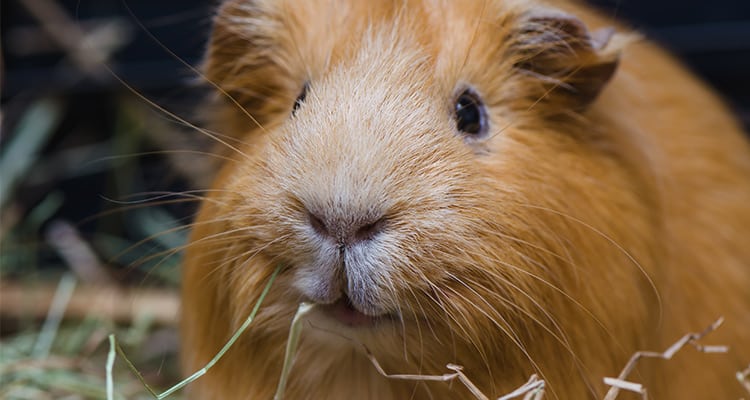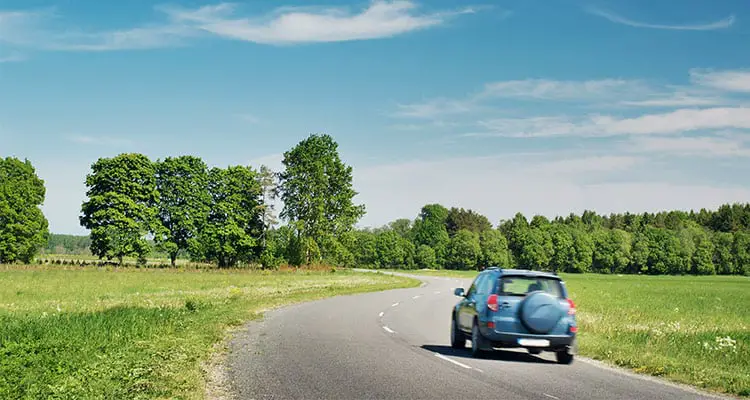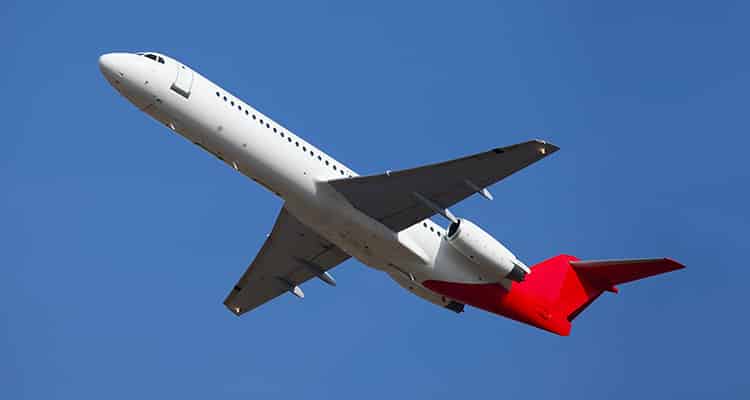Who doesn’t love guinea pigs? Well, everyone does. I couldn’t get enough of them, I could watch them all day long if I could. Unfortunately, none of us could afford to be with them 24×7. We all have other commitments, and other places to be at.
We all travel. The commute is not getting any less hectic.
Whether you are taking your guinea pig to the veterinarian, or just so you are not away from them, or they are your emotional support animals, or even if you carrying them to your folk’s place, you are one way or another going to be in a position to travel with your guinea pig at some point of time.
This is an area where you cannot afford to make mistakes.
How to Travel With a Guinea Pig
Guinea pigs may be cute and awesome, but they are too vulnerable to injuries during a commute. If you are not aware of the safety measures to undertake for a commute of your guinea pig, this is the place to learn everything you need to know about traveling with a guinea pig.
So, here are the most important things to be aware of when traveling with a guinea pig:
General Tips for all Modes of Travel
- Cage is to be made as a near “royal carriage”
- Check on your guinea pigs very frequently for signs of distress.
- Pet them often to make them feel safe
- Make sure to get the consent of the travel authority for the particular mode of travel 5. Always make sure they have access to food and water
- Have a big enough cage for the transport
- Make sure the bottom of the carrier is not porous
- The cage should not be made from hard material.
While Traveling by Car With Your Guinea Pigs
- Turn on the AC/radiator to maintain optimum temperature
- Place the cage such that it is not under direct sunlight
- If possible, have a seatbelt on the cage of your guinea pig
- Do not drive rash. No sudden breaks, no sudden accelerations.
- Have them in the backseat with the front seat pushed back as much as possible
While Traveling on a Plane With Your Guinea Pigs
- Make sure you keep them warm if the cabin temperature is too cold
- It is NOT advisable for you to sleep because of possible injury during turbulence
- Make sure your airlines has a pet-friendly policy. Get approval at the time of ticket booking
- Do not put food inside the cage. Have them packed.
- Make sure you have vaccinated them against diseases from the destination country. (In case of international travels)
While Traveling by Train With Your Guinea Pigs
- Make sure it is legal to carry a pet in the states through which your train goes.
- It is okay to give your piggies food in-cage while on a train
- Make sure you are keeping an eye on them all the time. Trains are louder than other modes.
- Traveling with at least one more person is advisable. We tend to sleep easier on a train.
- Keep them away from direct sunlight
Now I know what you are thinking. “What on earth can I know by these merely vague sentences?” That is why I am going to elaborate every one of these tips in the upcoming sections.
Under each of these tips as >subheadings, you will find everything you need to know to implement the tip in reality.
Be sure to read every one of these tips with care to ensure a safe and happy journey with your guinea pigs!
Choosing a Guinea Pig Travel Cage
A good travel cage for a guinea pig should preferably last for a long time. The cheaper options wear out or the fabric and stitching wears away too quickly. We learned this the hard way with our first travel carrier. It only lasted 2-3 months and a handful of trips.
Now, we have turned to looking at size and durability as the most important factors. Your guinea pig needs to turn around in the carrier, but not enough room to walk around.
- An adult guinea pig needs a carrier at about 19 inches (length) x 12 inches (width) x 12 inches (height).
If you do not find a suitable travel carrier online or at the pet store for guinea pigs, look for ones that are marketed towards cats.
The fact is that cat or kitty products outnumber guinea pig items 10 to 1. You can find many options available for kittens and cats that could fit the size with added comfort factors and stylish models.
Choosing a Guinea Pig Car Seat
If you are looking for guinea pig car seats, you will likely be disappointed. More often than not, your search will lead you to finding guinea pig car seat covers. You may also see baby car seats with guinea pig designs on them.
We think these are cute and very tempting to buy, but it doesn’t fulfill the need to transport our guinea pigs safely in the car. What we do in our experience, is to place the travel carrier we have for our guinea pig on the footwell of the car.
This can be at the floor of the passenger seat, but I prefer behind the front passenger seat for added stabilization. Your guinea pig is relying on your safe and smooth driving techniques to get through this trip in comfort and without much stress.
What Should I Put In My Guinea Pig Carrier?
If you put a bowl or toys in the carrier while driving, they will clang or bounce around. Try to keep your guinea pig secure in the carrier with anti-pill fleece blankets with a fabric that can’t be torn. Paper bedding also works.
Have you ever opened a backpack, bag or travel carrier and noticed mold, salt stains or a foul odor? This is because the storage carriers were not stored properly. We have recently purchased dehumidifier beaded packets that we place in our guinea pigs’ carrier when we store it away.
The location to keep this carrier should be out of direct sunlight to preserve its color and keep it dry in a cool area. The mudroom or closet works better than the basement, laundry room or attic.
When driving with the carrier, we place it on the floor behind the front passenger seat. We move the passenger back enough so it secures the carrier and doesn’t allow for it to move around. This is the most stable spot in our opinion.
Do Guinea Pigs Travel Well?
The trip outdoors could turn from fun and relaxing to stressful and frightful in a flash. This is because there are many outside factors to consider when your guinea pig is on the move. The safety of travel carriers comes first.
There should only be space for them to turn around, but not much more. Otherwise, your guinea pig may bounce around in there when unexpected occurrences happen.
You may have to slam on the brakes of your vehicle or a gust of wind may flow through the vents of the carrier causing them to experience a sudden chill. Anything can happen.
When we rate the overall travel ability of guinea pigs, we rank them rather high on the list. This is because they are carefree and comfortable when you have them in a travel carrier without being in a rush.
If the trip is long, consider taking breaks and provide some outdoor time before continuing on with your journey.
General Tips to Follow While Travelling With a Guinea Pig (For all Models of Travel)

1. Cage is to be Made as a Near “Royal Carriage”
Your guinea pigs are simply soft. There is no way they can take a hit out of inertia onto a hard surface. That is the last thing you want to happen in your entire life. They cannot even walk on meshed surfaces.
The first step is to cover the carrier cage all around on the inside with at least a dozen layers of newspaper. Next is to provide a cushion like a layer on top of it. For this purpose, you can use towels. The cage can have a meshed door, but never a meshed bottom. Also, make sure there is enough ventilation in the carrier.
2. Check on Your Guinea Pigs Very Frequently for Signs of Distress
Travel times could be pretty stressful for your guinea pigs. Since they have a great sense of hearing, even small noises could frighten them. So it goes without saying, that honking and loud truck noises and rail sounds are sure to make them scared. That is exactly why you have to keep checking on them for signs of distress. Shivering, voluntarily shrinking body size, hiding, unusual noises, are some common signs of distress.
3. Pet Them Often to Make Them Feel Safe
Sudden breaks, loud noises, the obvious change from the regular environment, not being able to play, are all reasonable causes of them feeling scared. The only thing that is as usual for them, is being with you. So it is essential for you to keep reassuring them that you are there. Once in 30 minutes, petting them is recommended.
4. Make Sure to get the Consent of the Travel Authority for the Particular Mode of Travel
Some airlines may deny flight to pets. Some airlines may have a strict policy on the type of carrier used. Even in trains, some states may have policies against pets traveling on trains. Getting the consent of the travel authority is obviously important for public modes of travel.
Usually this type of carrier cage (available on Amazon) is allowed on board both planes and trains.
5. Always Make Sure They Have Access to Food and Water
It is not advisable to leave them starving. The minimum requirement includes water and hay. Although, it is advised not to leave food loose in the cage while traveling because of the possibility of scattering. Water could easily get leaked on to the bedding and make a mess.
So there is absolutely no other choice than to feed them by yourself at regular intervals from small packets of food that you should prepare. Make sure there is no way for water to leak. Wet bedding could not only cause an unpleasant smell but also pave the way for bacterial and fungal infections to spread.
6. Have a Big Enough Cage for the Transport
A cage should not confine them from moving around naturally. Your guinea pigs must still be able to turn around, stand up, and move in circles within the cage. Denying them a space that does not confine them that way, could lead to a distressed emotional state. And I am sure that is not the best way to enjoy the company of a pet.
7. Make Sure the Bottom of the Carrier is Not Porous
Residues, feces, and bedding material are not to drop down. This applies irrespective of the mode of travel. Moreover, as mentioned earlier, a porous base hurts their feet. And I’m pretty sure you are taking the trouble of reading such a long article just because you never wanted to hurt your pal!
8. The Cage Should Not be Made From Hard Material
Even though the inner surface of the cage is separated from your guinea pigs by layers of bedding, you need to be on the safer side. What if the papers or the bedding gets distorted and the cage surface is exposed to your piggy? They will surely try to nibble on the cage. If the cage is made of toxic material, that is very bad news for your guinea pig.
If it is steel or any hard metal, chances of your guinea pigs getting hurt physically, are extremely high. Moreover, such metals are conducive to external temperature. That makes it harder to keep your guinea pig at an optimum temperature that is different from the external temperature.
How to Travel in a Car With a Guinea Pig

1. Turn on the AC/Radiator to Maintain Optimum Temperature
Guinea pigs do not have the physiological mechanisms needed to regulate their body temperature. Their body temperature depends on the external temperature.
If you are traveling in hot weather, have your AC on. If you are traveling in cold weather, have the radiator on. Either way, make sure the temperature in the car is optimum for your guinea pigs. PETA recommends that 70-90 degrees Fahrenheit is the optimum temperature range for guinea pigs.
2. Place the Cage Such That it is Not Under Direct Sunlight
Direct sunlight could have two adverse effects on your guinea pig’s health. One, it could affect their eyes. Two, it could alter the temperature of the cage, and eventually, make it hotter for the guinea pigs. Both of these, are for obvious reasons, to be avoided.
3. If Possible, Have a Seatbelt on the Cage of Your Guinea Pig
Securing the cage is the most important part of traveling with a guinea pig, irrespective of the mode of travel. Especially in a car, there is no need of explaining how inertia could slide and shift the cage very often. Also obvious is the fact that your guinea pigs move too when the cage moves. Having the seatbelt on the cage could help secure it from moving out of any sudden breaks.
4. Do Not Drive Rash. No Sudden Breaks, No Sudden Accelerations
Better late than never. What I mean to say is, it is okay if you go slow as a tortoise. But it is surely not okay if you get your piggy hurt by driving rash. And you know that. No matter how urgent, drive slow because a life once lost is not coming back.
5. Have Them in the Backseat With the Front Seat Pushed Back as Much as Possible
Perhaps you have to be prepared for any contingency. In case of an accident, the front seats could be more vulnerable to injuries from the broken windshield. Moreover, the legroom of the backseats could be shut by moving the front seats as backward as possible. This makes sure that the cage does not move at all. And it rules out the possibility of the cage falling down on the legroom of the backseats.
How to Travel on a Plane With a Guinea Pig

1. Make Sure You Keep Them Warm if the Cabin Temperature is too Cold
This can be achieved by having towels and a lot of hay inside the cage. A snuggle cup could be more helpful. Guinea pigs getting cold is another article I wrote that you will find helpful to keep them warm.
2. It is NOT Advisable for you to Sleep Because of Possible Injury During Turbulence
You may be able to sleep well while flying. But when flying with a guinea pig, you gotta make sure there are no possibilities of injuries. Not just during turbulence, even while taking off and landing, movements of the cage could injure your piggy.
Make sure you are awake for them throughout. That leads me to my next point. If you are flying for a long time, make sure you have one more person with you. You can take turns in taking care of your piggy.
3. Make Sure Your Airlines has a Pet-Friendly Policy. Get Approval at the Time of Ticket Booking
It is no surprise that some airlines have strict policies when it comes to pets traveling on board. Getting the necessary permissions and documents beforehand is important for obvious reasons. And unless you have a magic wand, do not expect that you can get approval on arrival at the airport. Prior approval, preferably at the time of ticket booking, is advised.
4. Do Not Put Food Inside the Cage. Have Them Packed
Flights are not always smooth and awesome. Sometimes the turbulence that nobody likes could happen. The last thing you would want is to get fined for the food and water leaking out. Have small packets of your piggy’s favorite foods. You can feed them at regular intervals when the flight is smooth.
5. Make Sure You Have Vaccinated Them Against Diseases From the Destination Country. (In Case of International Travels)
While traveling inter-continental, this step is very essential. You may have vaccinated your pals for the diseases they are prone to in the continent you live in. But the destination? They could have new diseases! Moreover, some airlines have policies that demand the presentation of a document as proof of vaccination. Approach your veterinarian to know more.
How to Travel on a Train With a Guinea Pig

1. Make Sure it is Legal to Carry a Pet in the States Through Which Your Train Goes
As said earlier, some states may have policies against pets traveling on trains. You have to make sure it is legal to carry a pet, specifically a guinea pig, on the train.
2. It is Okay to Give Your Piggies Food In-Cage While on a Train
Trains are not as turbulent as cars or flights. They accelerate gradually and they stop gradually too. So the risk of food spilling from the cage is minimal in trains. The automatic feeders can be placed inside the cages while traveling by train. Although, water is still off-limits.
3. Make Sure You are Keeping an Eye on Them All the Time. Trains are Louder Than Other Modes
The one reason that trains are most dangerous for guinea pigs? The noise! The sound of a train passing by in the opposite direction in the adjacent track, the sound of train horns, the sound of your own trail on the tracks, are all loud! Well, for humans it is just loud. But for the extreme sensitivity of hearing in case of guinea pigs, it is loooooouuuuuud.
Guinea pigs could easily get frightened by these noises. That is why I advise you to keep an eye on your pals at all times. Keep reassuring them of your presence.
4. Traveling With at Least One More Person is Advisable. We Tend to Sleep Easier on a Train
Trains make a great place to fall asleep. You can fall asleep without anybody restricting you when you travel alone, or with other humans. But when you are traveling with guinea pigs, you gotta take care of them all the time.
They have no idea what a train is, and they hate it when they are taken away from the environment they are used to. So you who put them in that situation, are in the responsibility to watch them. If you fall asleep easily on a train, travel with a backup caretaker for your guinea pigs!
5. Keep Them Away From Direct Sunlight
As explained in an earlier section of this post, direct sunlight is to be avoided while traveling. Well, I am not talking about you, I am saying this for the piggies!
I did say your guinea pigs should be kept away from direct sunlight. But that doesn’t mean you have to put their cage under the seats. Nor does it mean that you should cover the whole cage such that sunlight doesn’t enter, because air gets blocked too in that case. And it would be insensitive of me to think that I should elaborate on why that is a bad idea.
So, that’s it. You are now prepared to keep your gurry little pals safe while traveling. Thank me later, first get on with preparing for the travel!

